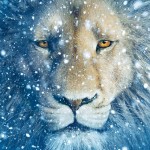
Anyway, Narnia fan Carl McColman has written a fantastic article about the film, after he watched the movie for a second time. He goes in-depth into the smaller character moments that the film captures, including the character arcs for Reepicheep and Eustace.
Here’s an excerpt from the article, which you can read in full, here.
Here’s my point: C. S. Lewis’s ‘Dawn Treader’ is a deeply contemplative book, concerned with inner transformation throughout the spiritual life. Michael Apted’s ‘Dawn Treader’, constrained by the limitations of his cinematic art, necessarily downplays the contemplative dimension and instead emphasizes how the characters relate to one another and their shared struggle against evil or injustice. The book gives a lengthy description of the sheer beauty to be found in the last sea, as the Dawn Treader nears Aslan’s Country (heaven), whereas the film (rightly so, I believe) offers only a hint of that profoundly contemplative experience. But if we dismiss the movie because of these kinds of changes, we risk missing treasures found in the film alone. For example, the delightful and nuanced friendship that develops between Reepicheep, the valiant talking Mouse (and the only character in either book or film to complete the journey to Aslan’s Country) and Eustace, the spoiled and naughty British school boy who undergoes a dramatic conversion experience in Narnia, all the way down to his reptilian brain. C. S. Lewis only hints at how Reep and Eustace interact, but in the film their blossoming relationship serves as the benchmark by which Eustace’s spiritual growth can be measured.
